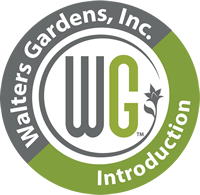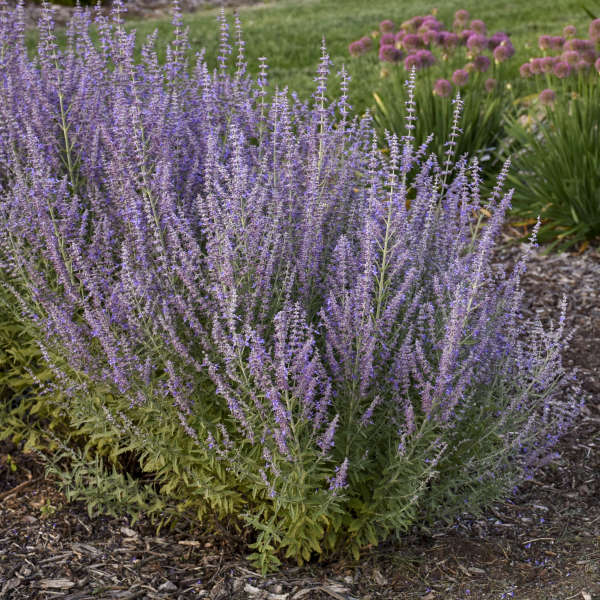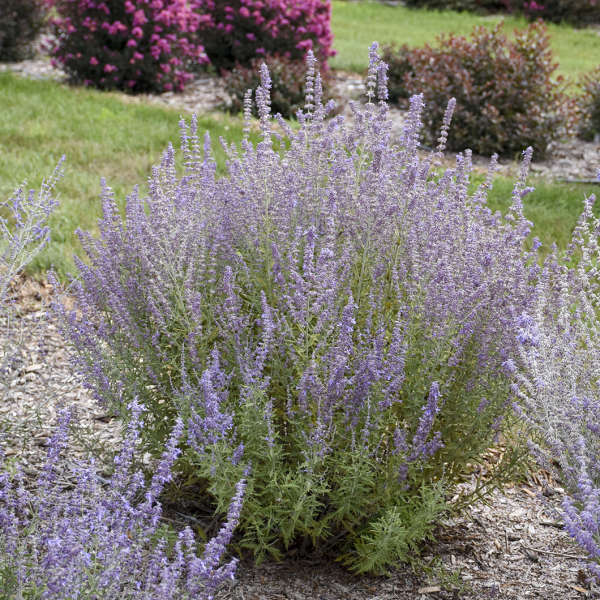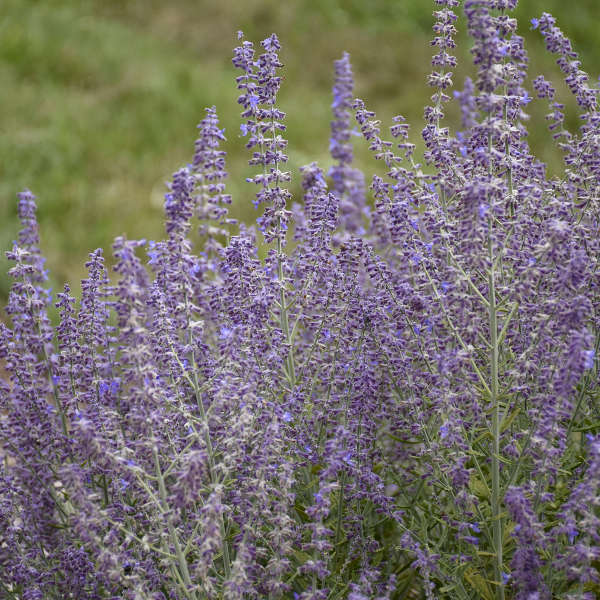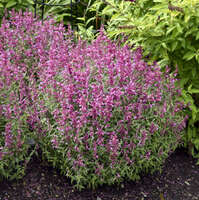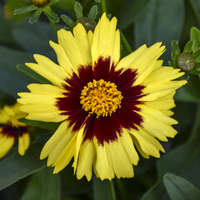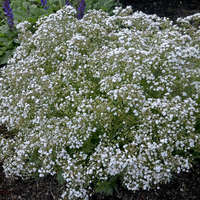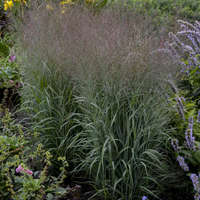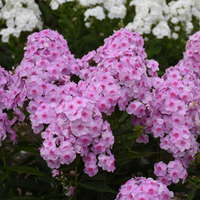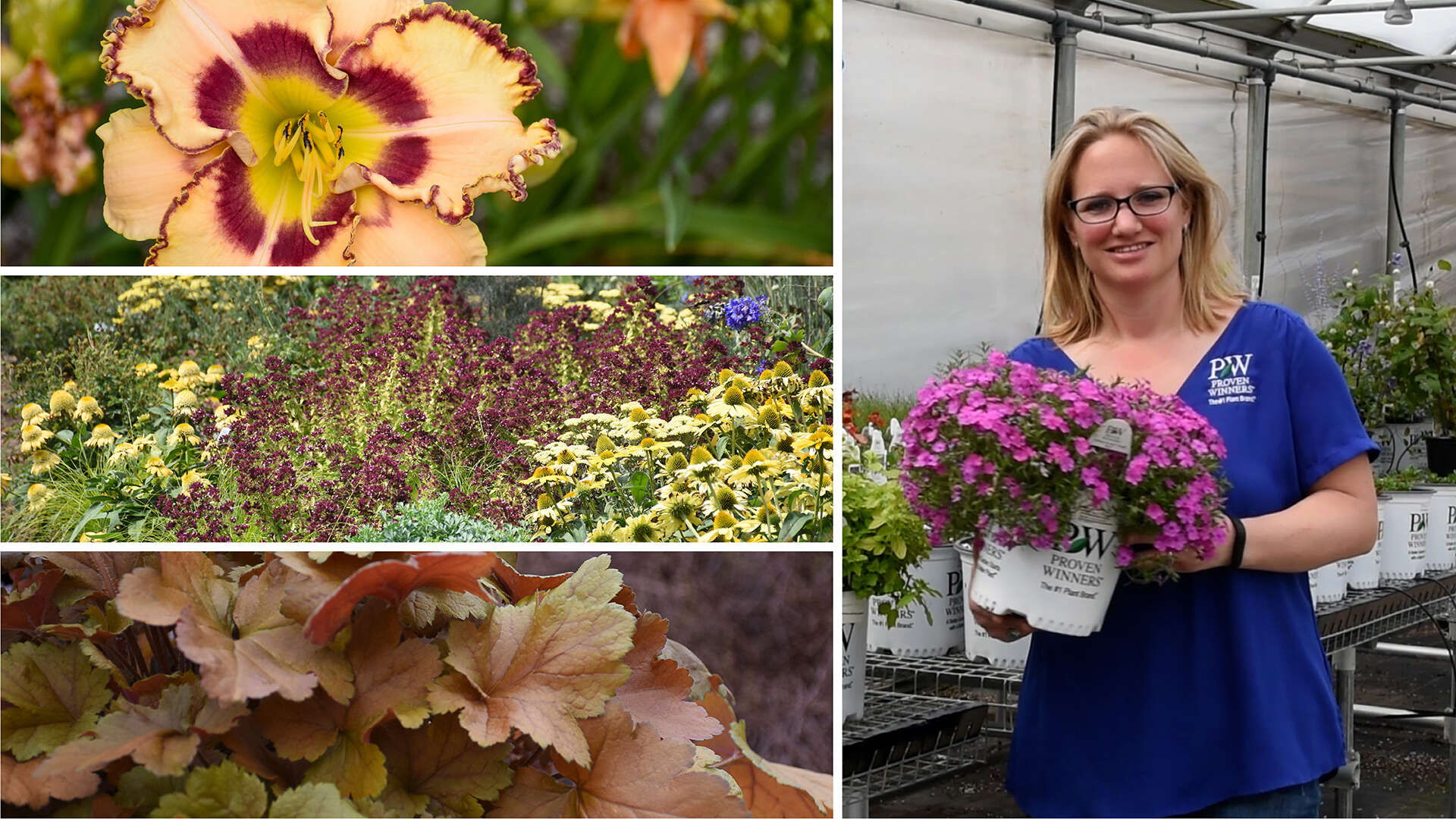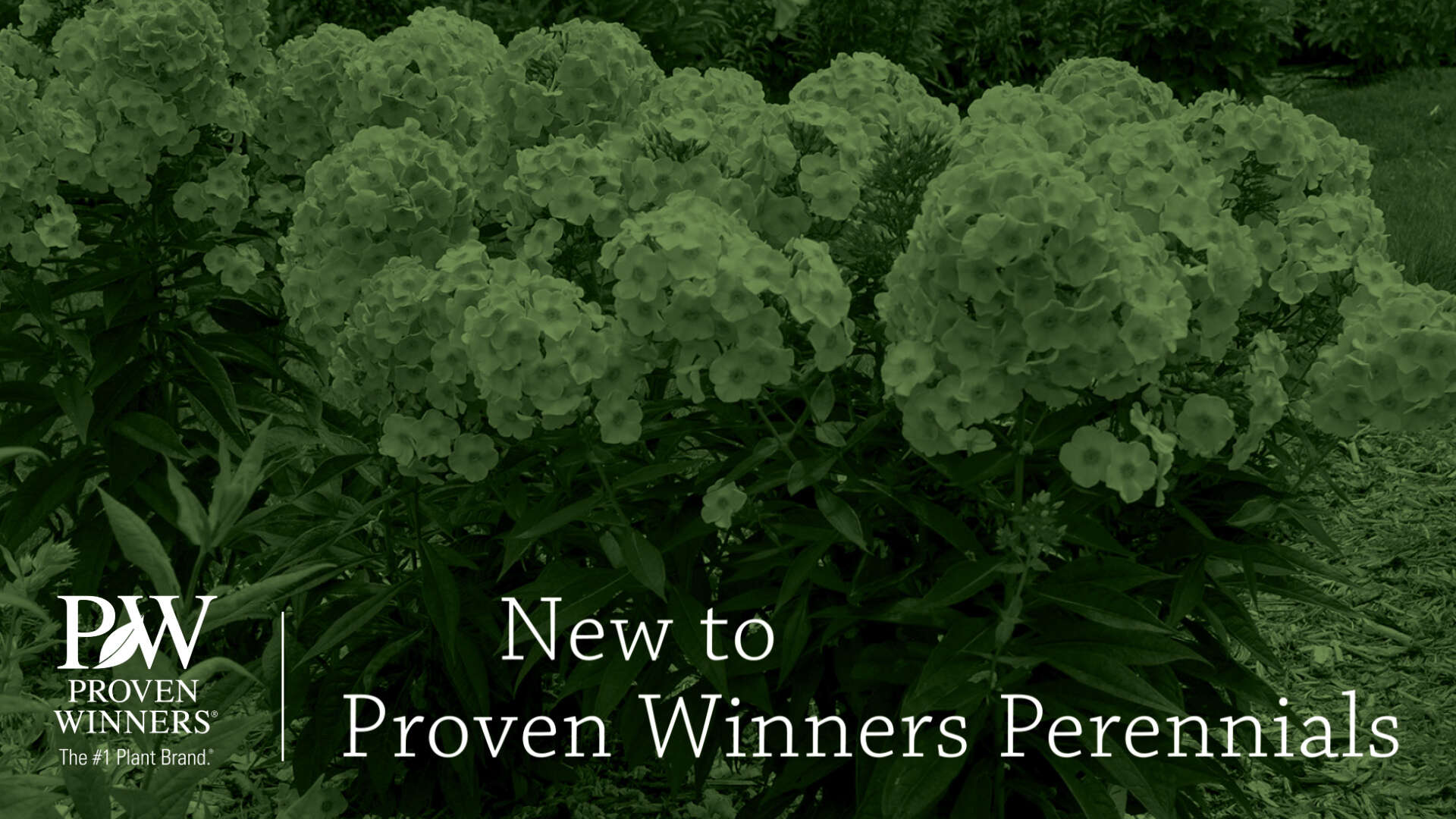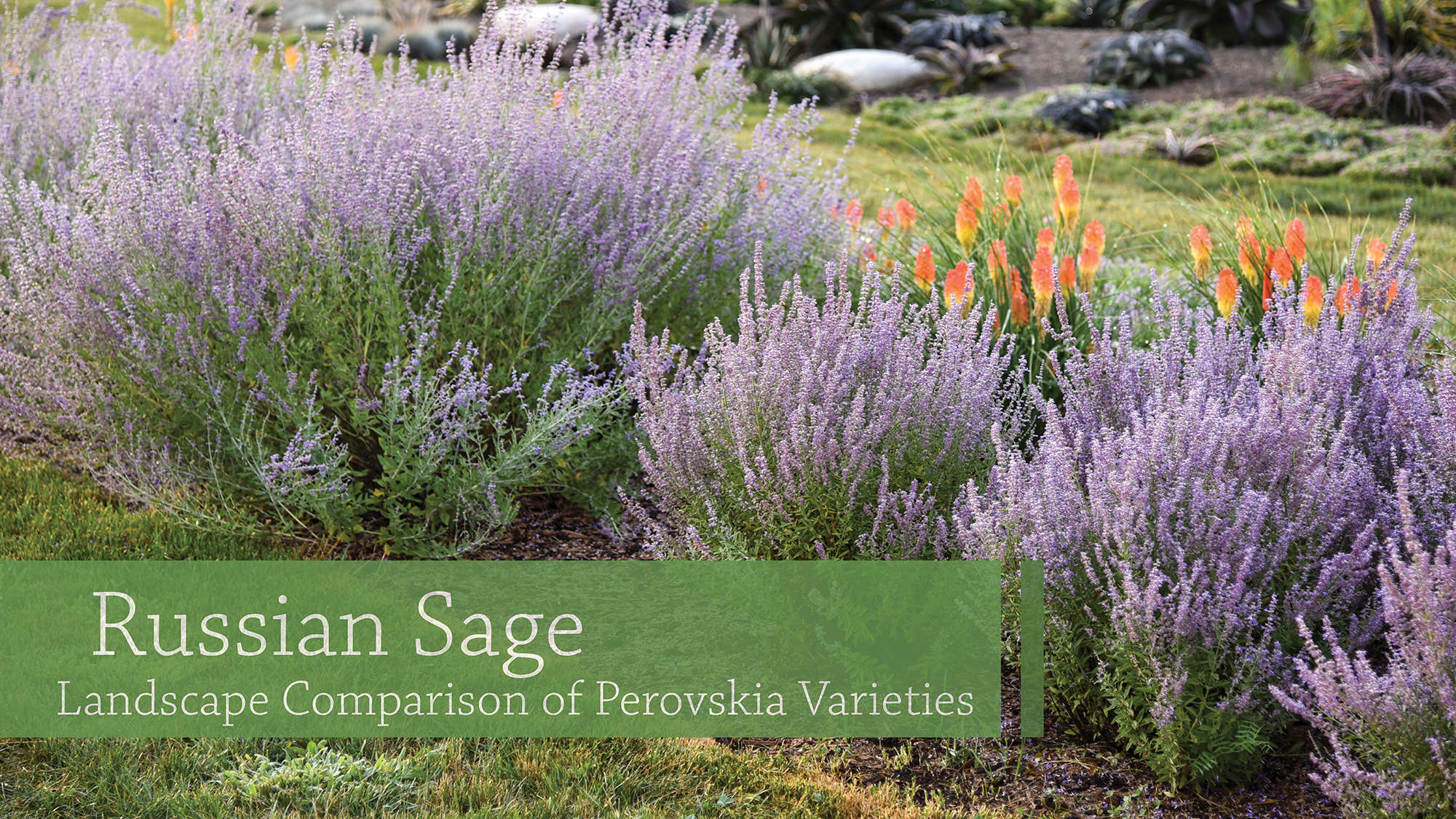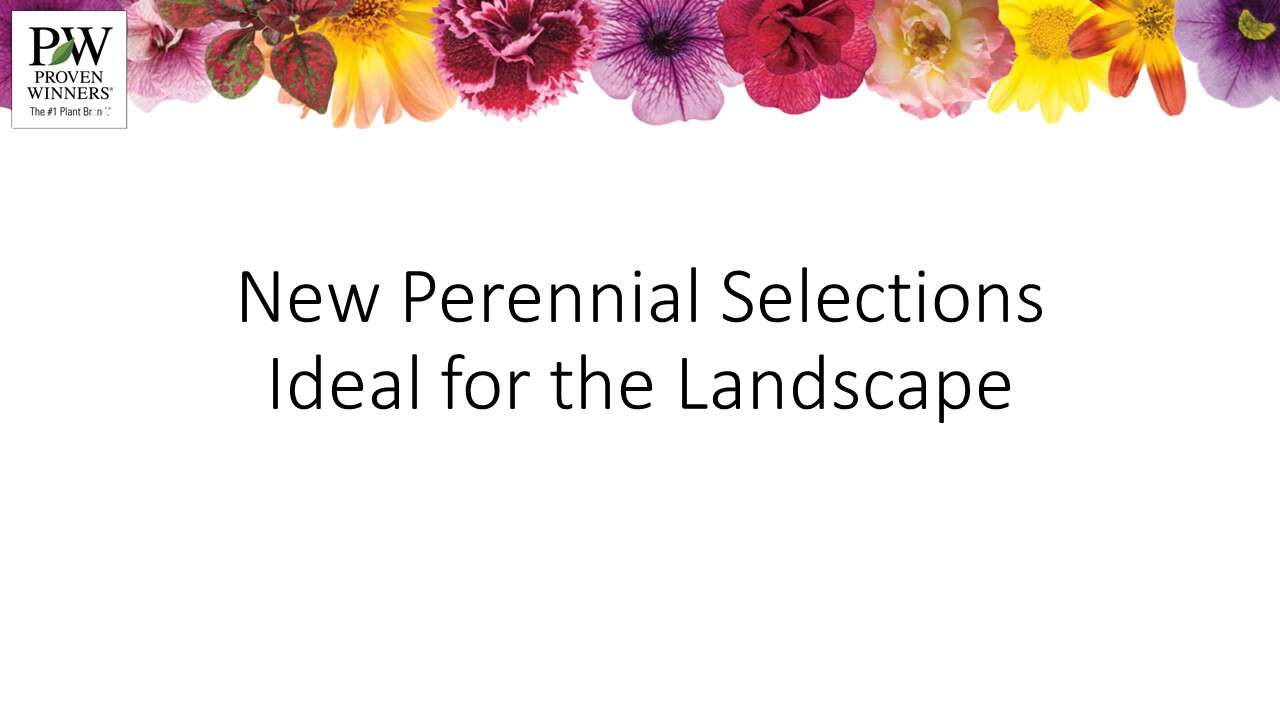Growing Temperature:
68-72° F
Soil PH:
6.0-6.5
EC (What is EC?):
1.5-2.0 pour through method
Fertility:
We recommend 75-100 ppm Nitrogen constant liquid feed for optimum growth at every watering, or incorporate slow release fertilizer at a rate of 1.0-1.25 lbs. per cubic yard of growing media. The recommended EC rate is 1.5-2.0 using the pour-through method.
Vernalization:
Cold beneficial. Providing 6-9 weeks of cold improves overall flower performance.
Pests & Diseases:
Aphids, leaf hoppers, spider mites, and whiteflies tend to be the most common pests seen on Perovskia crops. Root rot and stem blight are the most common diseases. Most diseases can be avoided using proper growing practices.
Potting & Timing:
Based on our trials, we recommend planting bare root Perovskia in spring for a quick turn crop. If you prefer small plugs, such as a 72ct plug, we recommend planting in late summer of the season prior to sales. Both bare root and summer planted plugs finish in Premium 1-gallon containers. Spring planting small plugs is not recommended, because they typically require two plugs per pot to bulk up properly. If you do choose this route, choose a smaller container to finish, such as a trade 1-gallon container.
Moisture:
For potting soil use a well-drained soil mix of bark and peat.
In the landscape, Perovskia are well-known for being drought tolerant. In production, grow your plants moderately moist to slightly dry. Perovskia will do well with either drip irrigation or overhead irrigation. Be sure to irrigate in the morning to allow the foliage to dry by evening. Overwatering may result in root rots.
Planting Level:
Plug even with soil line. Bare root crown slightly below soil line.
PGRs/Pinching:
Perovskia can be toned using spray applications of 2,500-ppm daminozide (B-Nine, Dazide) or a tank mixture of 2,000-ppm daminozide plus 3-ppm uniconazole (Concise, Sumagic).
Lighting:
Perovskia is day length neutral and does not require artificial lighting to flower. However, high light levels are recommended during the growing season, as this is a full sun plant. Grow this crop under clear plastic indoors or in direct sunlight outdoors. Proper lighting will keep your plants more compact, low light levels will cause the plant to stretch.
Other Comments:
Perovskia is a very hardy perennial. The best way to overwinter them is in a minimally heated greenhouse kept slightly above freezing. They may also be overwintered outdoors under a heavy frost blanket or in an unheated greenhouse. Bait liberally for rodents over the winter and do not let plants sit wet or crown and root rots may settle in.
